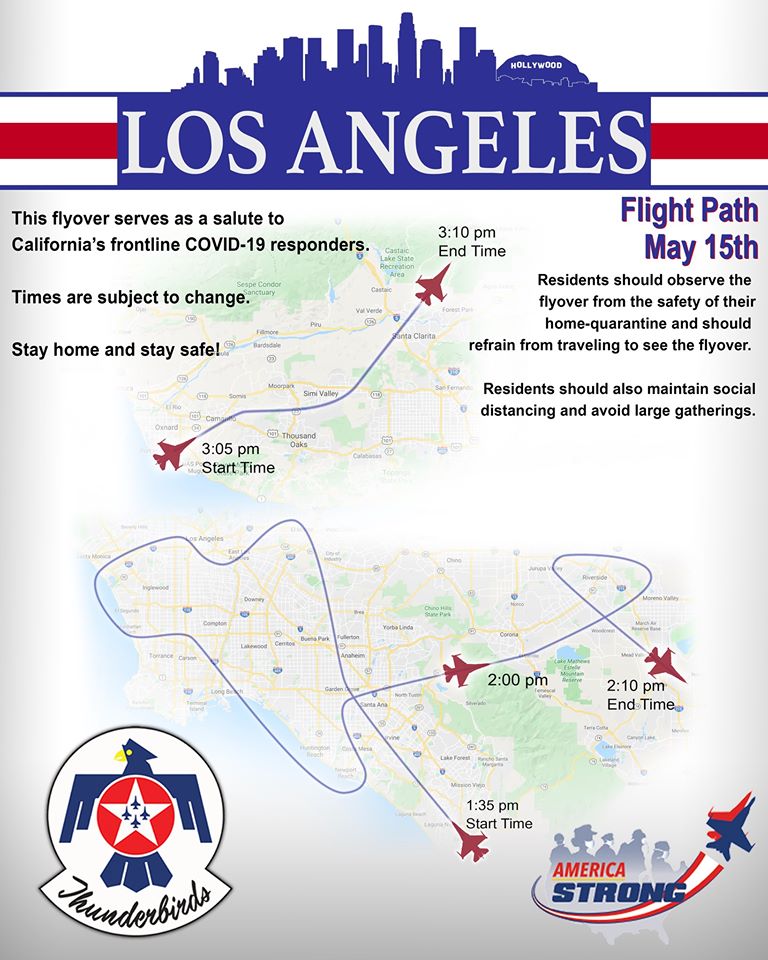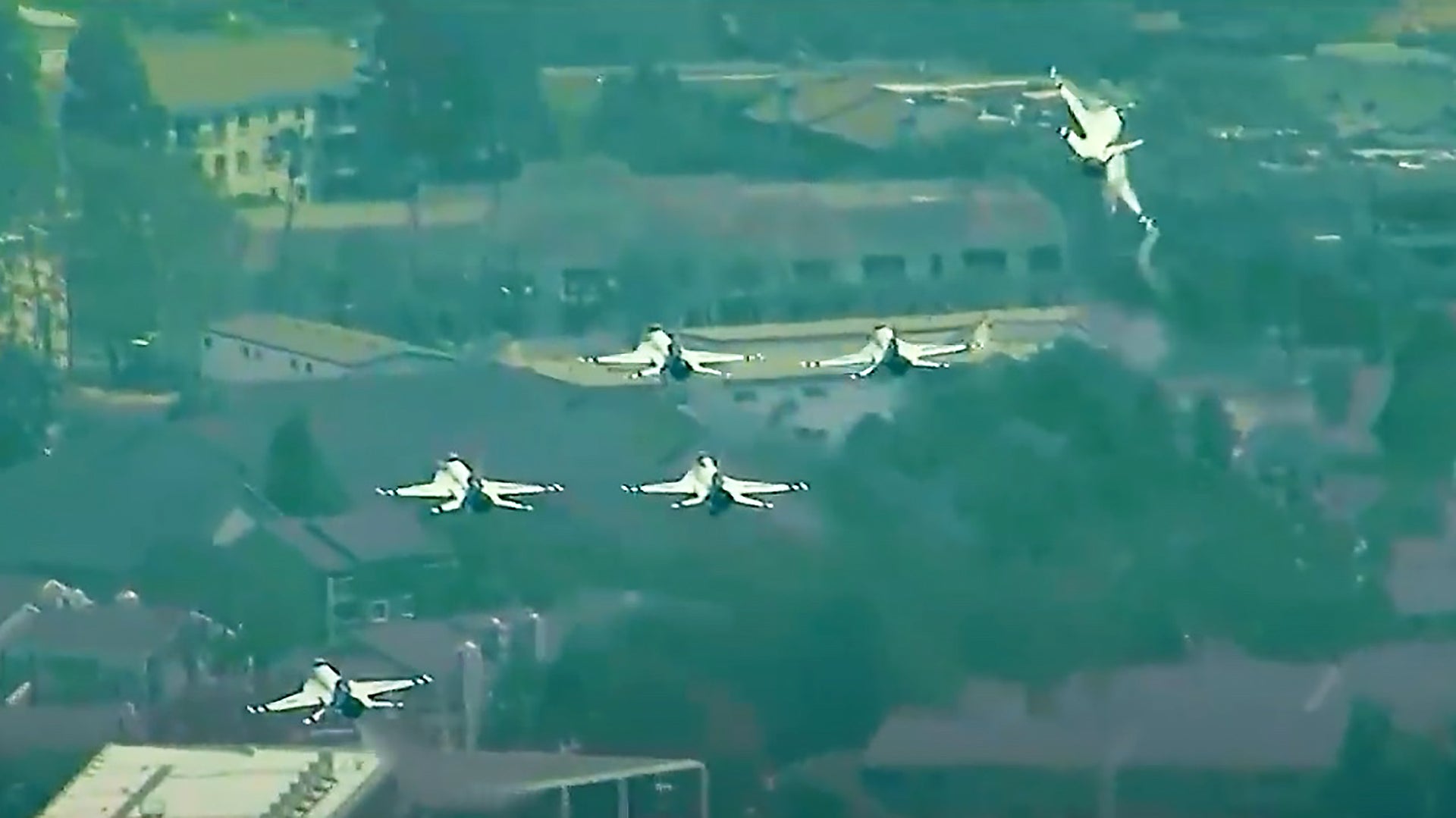The U.S. Air Force Thunderbirds are touring around the western United States as part of their “America Strong” flyover mission that is meant to support medical workers, first responders, and essential personal during the COVID-19 outbreak. The team, which prides itself on precision flying, especially when in the iconic six-ship delta formation, had a bit of a scare today as they soared over Los Angeles County. Although it may have been an unwelcome moment, the good news is that training worked and nobody got hurt as a result of the momentary lapse in cohesion.
The video below, which was shot from a helicopter, shows the formation heading south, towards Newport Beach. Then, at about 0:26, you can see Thunderbird #1 level out fairly quickly from what looks like a small correction turn, with #3 sliding-out towards #6 on the right end of the formation as a result. #6 catches the potential issue and takes a hard break to the right out of the formation so as to avoid a potential collision. The rest of the delta formation also loses its form a bit for a moment, but they suck back together as they go into a steeper left-hand turn.

It isn’t exactly clear what caused the issue. According to the map the team released prior to the flyover, the formation should have been out over the water during this leg of their journey. Regardless, it is a stark reminder of just how fast things can go from fine to potentially devastating up there. An unsightly breakaway is nothing compared to the alternative. So, although it wasn’t the team’s prettiest moment, it underscored just how well their contingency practices, honed over nearly 70 years, work.

It is also a reminder of how tough these flyovers are. The team has to navigate unfamiliar and complex routes at low altitude while in tight formation and traveling at around 400 miles per hour. Weather, turbulence, other air traffic, birds, and even the position of the sun can complicate everything. Oh, and they have to do it over a long period, with some flights lasting up to a couple of hours.
It is really an unprecedented and highly intricate feat.
Author’s note: A big thanks to JP for sending this over!
Contact the author: Tyler@thedrive.com
